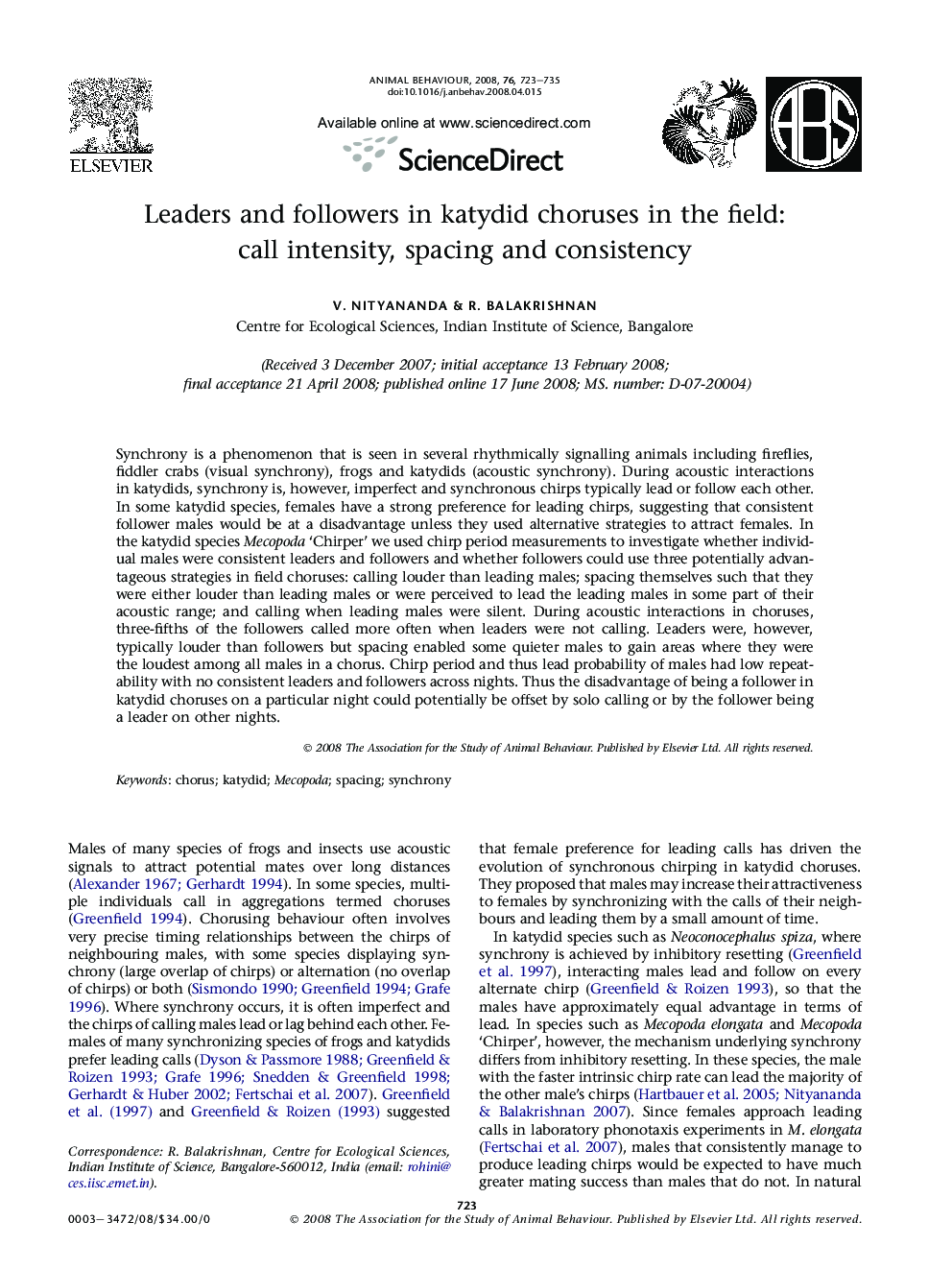| کد مقاله | کد نشریه | سال انتشار | مقاله انگلیسی | نسخه تمام متن |
|---|---|---|---|---|
| 2418818 | 1104358 | 2008 | 13 صفحه PDF | دانلود رایگان |

Synchrony is a phenomenon that is seen in several rhythmically signalling animals including fireflies, fiddler crabs (visual synchrony), frogs and katydids (acoustic synchrony). During acoustic interactions in katydids, synchrony is, however, imperfect and synchronous chirps typically lead or follow each other. In some katydid species, females have a strong preference for leading chirps, suggesting that consistent follower males would be at a disadvantage unless they used alternative strategies to attract females. In the katydid species Mecopoda ‘Chirper’ we used chirp period measurements to investigate whether individual males were consistent leaders and followers and whether followers could use three potentially advantageous strategies in field choruses: calling louder than leading males; spacing themselves such that they were either louder than leading males or were perceived to lead the leading males in some part of their acoustic range; and calling when leading males were silent. During acoustic interactions in choruses, three-fifths of the followers called more often when leaders were not calling. Leaders were, however, typically louder than followers but spacing enabled some quieter males to gain areas where they were the loudest among all males in a chorus. Chirp period and thus lead probability of males had low repeatability with no consistent leaders and followers across nights. Thus the disadvantage of being a follower in katydid choruses on a particular night could potentially be offset by solo calling or by the follower being a leader on other nights.
Journal: Animal Behaviour - Volume 76, Issue 3, September 2008, Pages 723–735